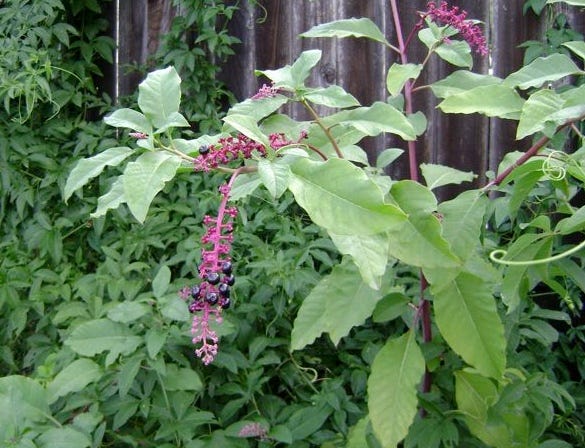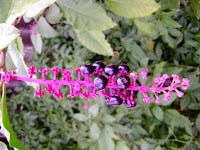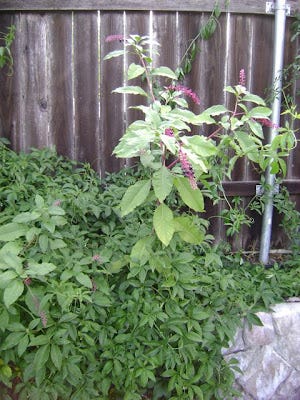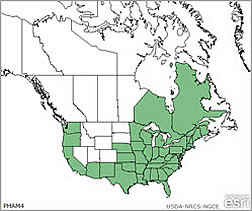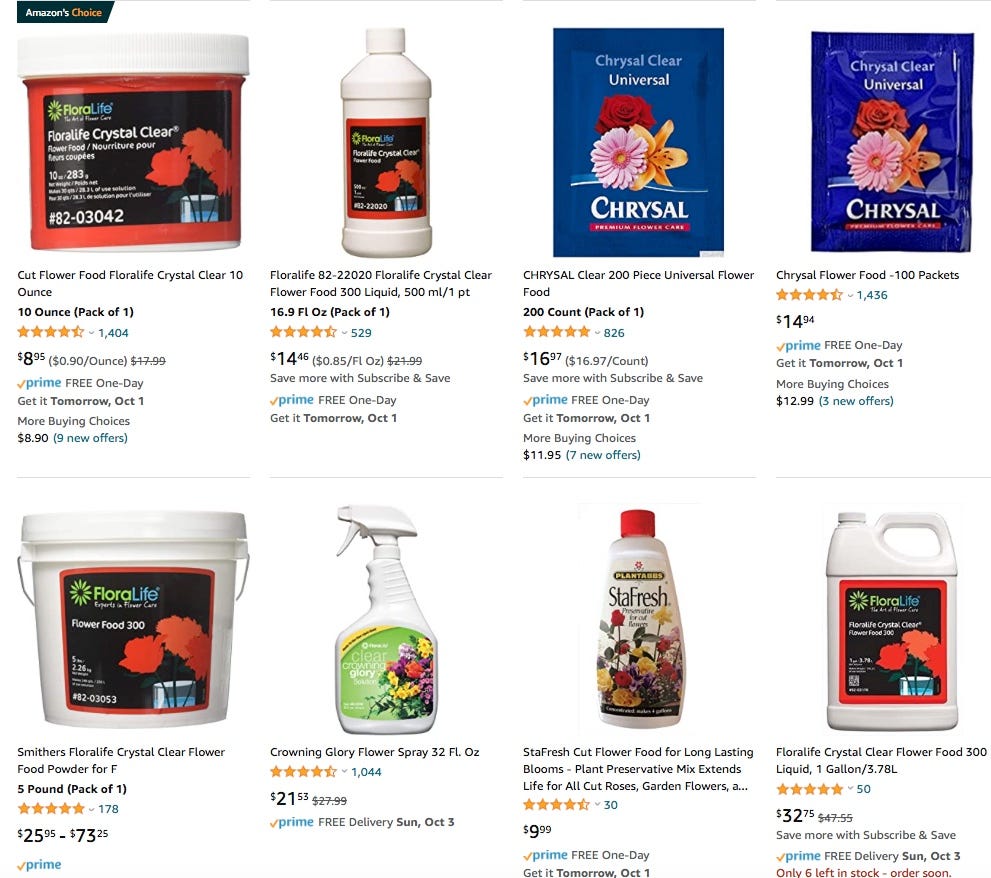Cut Flower Care. Watering Houseplants. Pokeweed.
A deeper dive into Episode 142 of the Garden Basics with Farmer Fred podcast. Plus, more details about a nefarious weed mentioned in passing in Episode 141: pokeweed.
First, some insights into Episode 142 of the Garden Basics podcast…
Here’s a picture of the two vases of cut flowers critiqued by Debbie Flower: Macarena zinnias, and the “Joy” miniature rose. (she was kind)
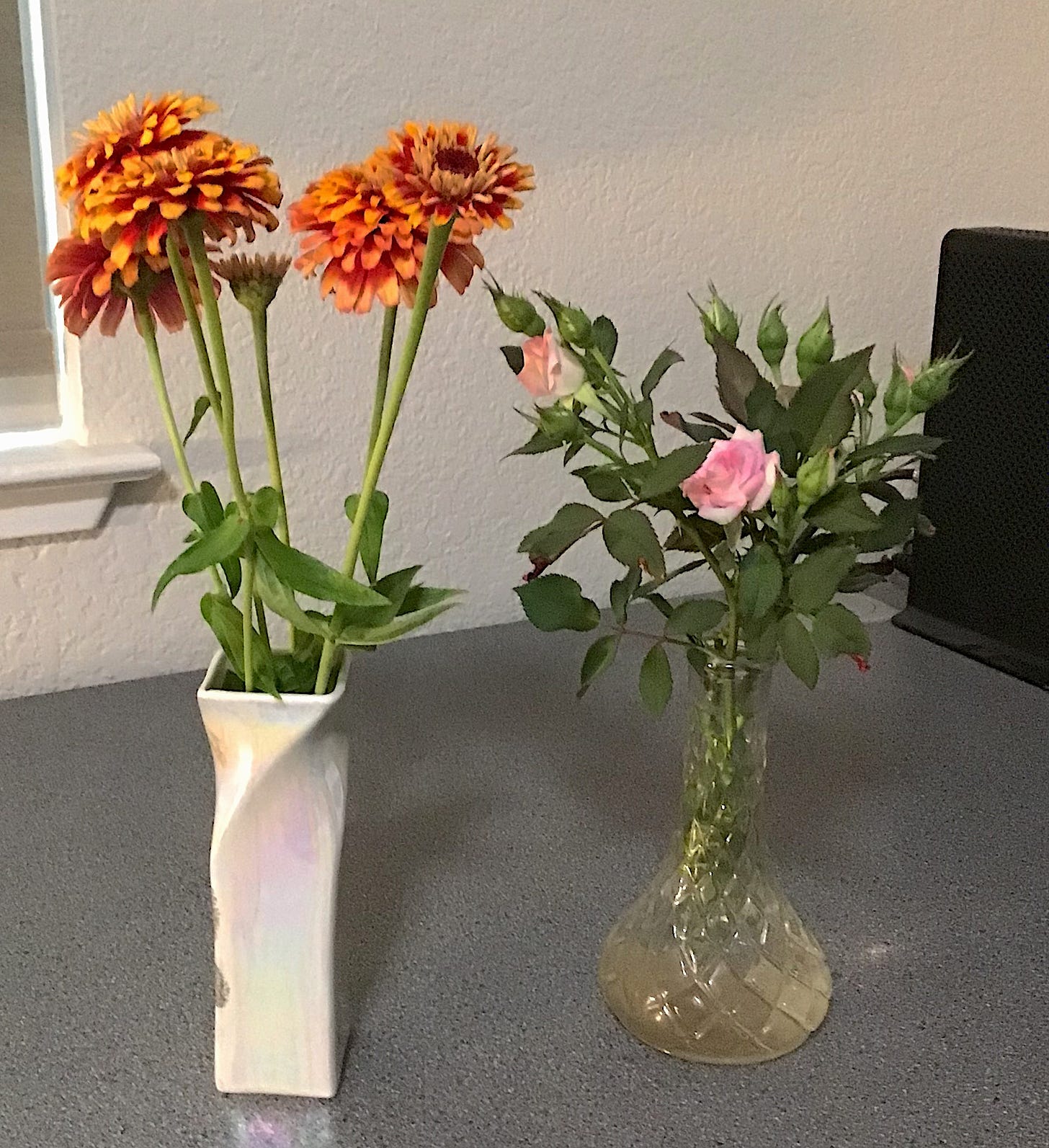
Second, here’s Debbie Flower’s homemade recipe for a floral preservative, to keep those cut flowers in vases looking good for a longer period of time:
1 quart of water
two tablespoons of an acid such as vinegar, lemon juice, or lime juice
two tablespoons of sugar
a half a teaspoon of bleach.
From Johnny’s Seeds, a great article about floral sunflowers, varieties that are pollen free.
Finally, a plea from Lori Ann Asmus, Master Gardener and Indoor plant specialist, on watering your indoor plants outdoors:
Pretty But Deadly: Pokeweed Returns for Fall
"Fall Color" isn't just limited to the changing hues of the leaves of deciduous trees this time of year. There are lots of colorful shrubs right now, producing flowers and berries, many of which are outstanding garden plants: cotoneaster, toyon, bottlebrush, the strawberry tree, Oregon grape, pyracantha and beautyberry, for example. But there are some pretty poisonous plants putting on a show right now here in Northern California, and elsewhere. Plants, that if you get a little too curious, could knock you on your ass.
For example, Laura writes in, with pictures:
This gorgeous invasive plant invading her Citrus Heights, CA backyard? Pokeweed, a widespread late summer/fall weed throughout most of the country.
.
After posting those pictures at the Get Growing with Farmer Fred Facebook Page, valley and foothill gardeners responded with words of warning:
"It is poisonous and it is becoming an invasive weed in California and so is posted as a noxious weed. I had a friend who had them in their yard and their son wrongfully thought they were elderberries so they had picked a bunch to make jam. Thankfully she didn't get time to make that jam and they got moldy."
"Definitely pokeweed...would not recommend putting in the compost pile...they also have a deep tap root and are hard to get rid of...Placer County posted a warning on this plant as being both poisonous and invasive."
Cindy Fake of the Placer County Cooperative Extension office has written extensively about the dangers of pokeweed (Phytolacca americana, also known as pokeberry, inkberry and American pokeweed):
"If you have seen this plant, beware! Pokeweed, a poisonous invasive species, has become more and more common...pokeweed is a rapidly growing perennial shrub, up to 10 feet tall, with large leaves and red stems.While some homeowners may be tempted to keep pokeweed in their gardens because of the pretty white flowers and glossy dark purple berries, all parts of the plant are toxic to humans, pets, and other mammals.
Pokeweed berries provide food for birds, which are not affected by the toxins. However, the birds then spread the seeds, helping the plant to invade orchards, fields and yards, and competing with crops and ornamentals.
Once established, pokeweed can be very difficult to eradicate. It grows a very large taproot, and can have multiple stalks growing from a single root. Do not put plants or berries in green waste disposal bins or in compost. Unfortunately, the taproot usually remains and often resprouts the following year."
The UC Integrated Pest Management Pest Note on Pokeweed, released in September 2020, has removal tips:
"Hand pulling is effective on small plants. Once plants are established and develop an extensive root system, hand removal is difficult. Digging out established plants with a shovel is effective, but often difficult in summer when soils are dry. Established plants may have large roots that must be removed to prevent regrowth. Cultivation can be effective on new seedlings in raised beds or other areas where tilling can be used. Cultivation on large established plants is not effective. When removing mature plants, ripe berries should be bagged and discarded so the seeds don’t reinfest the soil."
Consult that Pest Note on eradicating pokeweed with herbicides. Read and follow all label directions.
More pokeweed facts here and here.
Those of you from the South may recall "poke salad" as more than a song by Tony Joe White. As Cindy Fake points out: "in some parts of the US, young pokeweed leaves are eaten after extensive processing to remove toxins, but even after processing, some toxins remain, so consumption is not recommended."
Agreeing with that is the California Poison Control System, which reports pokeweed (Inkberry) as a Class 3 toxin: "Ingestion of these plants is expected to cause nausea, vomiting, diarrhea and other symptoms that may cause illness but is not life-threatening."
WHAT TO DO FOR A PLANT POISONING
• Do NOT induce vomiting.
• Remove any plant parts from the mouth or hands.
• Wash around the mouth and hands and give a few sips of water.
• Check for any irritation of the skin, mouth or tongue.
• Here in California, call the California Poison Control System at 1-800-222-1222. Consult your state’s Poison Control System for more local tips.
Today’s Marketplace:
Thanks for Subscribing and Spreading the Word About the Garden Basics with Farmer Fred newsletter, I appreciate your support.
And thank you for listening to the Garden Basics with Farmer Fred podcast! It’s available wherever you get your podcasts. Please share it with your garden friends.
As an Amazon Associate, I earn from qualifying purchases from some of the underlined links in the newsletter. This is how I am trying to keep this a free newsletter. And as long as you buy whatever you want from Amazon using any of those links to get into the Amazon site, I get a few pennies. Thank you.




